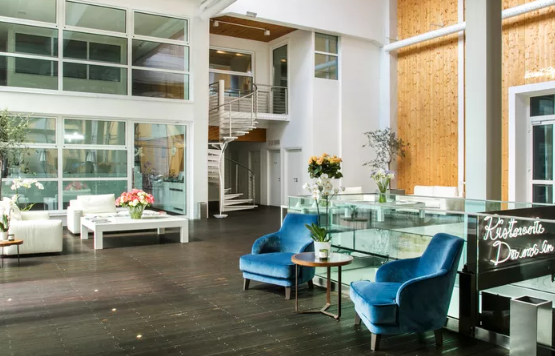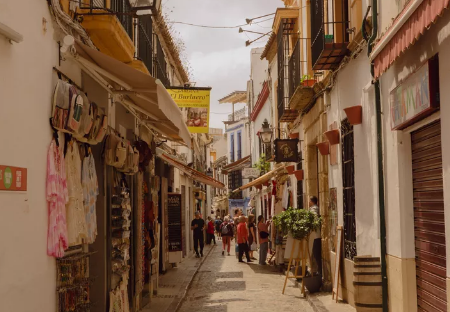Córdoba is the capital of the Andalusian province of Córdoba and one of Spain’s most fascinating destinations. Occupied by the Romans in the 2nd century BC, the city has deep ties to its history and is vibrant due to its multicultural ties to Judaism, Christianity, and Islam. During the tour, you can’t help but learn and experience how different civilizations and cultures have coexisted for centuries.
Some of the best places to explore on this side of Córdoba have been designated as UNESCO World Heritage Sites. In fact, Córdoba is home to three sites – plus a UNESCO Intangible Cultural Heritage event – and has more World Heritage sites than any other city in the world. While the Cordoba Mosque, Medina Azahara, the city’s historic center, and the Cordoba Courtyard Festival are some of the most famous attractions, there are many other things in Cordoba that are worth visiting for tourists – including the magnificent Roman bridge, equestrian shows, and traditional Arab baths. In Córdoba, there are always different things to do and celebrate. From the International Flower Festival to the equestrian shows and festivities of Córdoba, there’s always a good reason to come together in Córdoba.

UNESCO Sites
Mosque of Córdoba
A guided tour of the Mosque of Córdoba is an “essential” activity. Imagine a mosque converted into a Catholic church in an original Muslim building. Your guide will show you how it has changed over the centuries and how it reflects the culture and people of each era. Be sure to purchase your tickets online before your trip to ensure you don’t miss out on the opportunity to visit this unique compilation of history and culture.
Historic center of Córdoba
The historic center of Córdoba is a place full of small streets to explore: the courtyards are full of flowers, the squares are charming, and there are great bars and restaurants. The mosque is undoubtedly the city’s most famous building, but UNESCO notes that there are hundreds of other buildings of cultural and historical significance – such as the synagogue in the Jewish quarter (Judería), traditional houses built around courtyards, and the Roman bridge that spans the Guadalquivir River.
Medina Azahara
Built by the Umayyad dynasty in the mid-10th century, Medina Azahara is a magnificent city that was discovered in the early 20th century after being forgotten for almost 1000 years. Today, it is an archaeological site and a model of ancient urban infrastructure (roads, water systems and buildings) and Islamic civilization of Andalusia. It is located about five miles outside the city center and can be reached by bus or car.
Courtyard Festival of Córdoba
Every May, the Fiesta de los Patios brings flowers, bright colors and seductive aromas “to the historic city center.” Listed as a UNESCO Intangible Cultural Heritage event, the 12-day festival includes courtyard competitions (residents decorate the courtyard with flower beds and pots, some of which are hung on the walls), singing, dancing, drinking and eating. This ancient way of life is still preserved by the locals, and the neighbors share a place surrounded by many plants that help us endure the heat.
Best Hotels
Hospes Palacio del Bailío
Located in the heart of the city, Hospes Palacio del Bailío blends modern comforts with Roman history. While the rooms themselves are equally thoughtful and stunning (think hand-painted stucco walls and centuries-old murals), the real highlight is the common areas – the outdoor pool, indoor Roman baths, and spa.

NH Collection Amista de Córdoba
NH Collection Amistad Córdoba is a 108-room hotel in the Jewish Quarter consisting of two 18th-century palaces. The hotel is equipped with everything you need to relax and unwind — beautifully renovated spaces, 24-hour room service, free Wi-Fi — and is also known for its outdoor pool, solarium, and patio where you can relax after a long day of exploring.
Hotel Las Casas de la Judería Córdoba
Most of Córdoba’s main tourist attractions are within walking distance of the Hotel Las Casas de la Judería Córdoba. Consisting of five different buildings, all connected by terraces and courtyards, the hotel is the epitome of history and culture to offer you a truly unique stay.
Things to do
Visit Plaza de la Corredera.
Plaza de la Corredera is a 17th-century square that has been the site of bullfights and the burning of the Inquisition. However, the modern chapter of the square features cafes and restaurants where visitors can enjoy churros, ice cream, and other refreshing treats.
Watch a show at the Royal Stables.
The Royal Stables were built in the 1570s to carry out an Andalusian horse breeding program that continues to this day. The building’s cobblestone floors, vaulted ceilings, stone columns and brick arches also lay the foundation for the “Passion and Spirit of the Andalusian Horse”, a nocturnal equestrian show that blends “the art of flamenco and the dedication of the riders”.

Tour the Alcázar de los Reyes Cristianos.
While exploring the historic city center, don’t miss the fortress and palace located near the Guadalquivir River, the Alcázar de los Reyes Cristianos. Once the main residence of Queen Isabella I of Castile and King Ferdinand II of Aragon (the monarch who financed Christopher Columbus’ first Atlantic crossing), the castle is made up of stone walls, towers, gardens, Arab baths, courtyards and more – visitors are advised to book their tickets online.
Spend a few hours at the Archaeological Museum of Córdoba.
If you love history and love to learn about different cultures and civilizations, I highly recommend the Archaeological Museum. This museum is not as crowded as other museums…… It houses a real treasure that can help visitors learn about the town’s beautiful and colorful history.
Relax in a traditional hammam.
Visitors who want to combine history with a self-care experience, Hammam Al Andalus is the best choice. In addition to soaking in the Andalusian Arab Baths, visitors can also choose between massages, stretching collections or body purification treatments.
Best Shopping
Jewish Quarter
Handicrafts are an important part of Córdoba’s culture, including leather goods, pottery, jewelry, and gold and silver products. The Crafts Association of Córdoba has a map that shows the different craft shops inside the historic center, but you can also narrow down the route to the Jewish Quarter. Here you will find a variety of boutiques and family-owned shops, such as Ana Martina, a silversmith dedicated to sustainability, and Zoco Municipal de Artesanía. “El Zoco” is a handicraft market held in a traditional courtyard full of flowers, with amazing handicrafts, from ceramic and papier-mâché sculptures to puppets and leather handbags.

Best Time to Visit
Most visitors travel to Córdoba in the spring, and the itinerary coincides with the Córdoba Fair or the Córdoba Courtyard International Festival. April to June is the busiest season and the city looks very beautiful, but I prefer the season after September. You will enjoy very pleasant temperatures and many different and fun activities. For example, the FLORA International Flower Festival in October is the world’s largest event of floral and botanical art. This event has become an important part of the city’s cultural and festival calendar.
If you’re planning to travel to Cordoba during the off-season, whether it’s summer or winter, it’s important to consider the weather conditions. The temperature in Córdoba is very different from the year-round temperature in many other cities in Spain. For example, summers are typically short, hot, and arid (up to 98 degrees Fahrenheit), while winters are typically colder (as low as 39 degrees Fahrenheit) and partly cloudy.
How to Get There
Getting to Córdoba is very easy thanks to the AVE train from Madrid to Córdoba. The high-speed train journey takes less than two hours. If you’re coming from Seville, it’s only a 45-minute train ride to Córdoba, making it the perfect day trip for those who have the Andalusian capital as their base camp.
How to Get Around
Walking is the best way to get around Córdoba, especially if you spend most of your time in the historic center. Public transportation is also a great option if you’re exploring the outlying areas; The bus network has more than a dozen routes running through the city. You can check the route online and buy the fare from the bus driver (just bring a small note or coin to pay for the €1.30 ticket).
